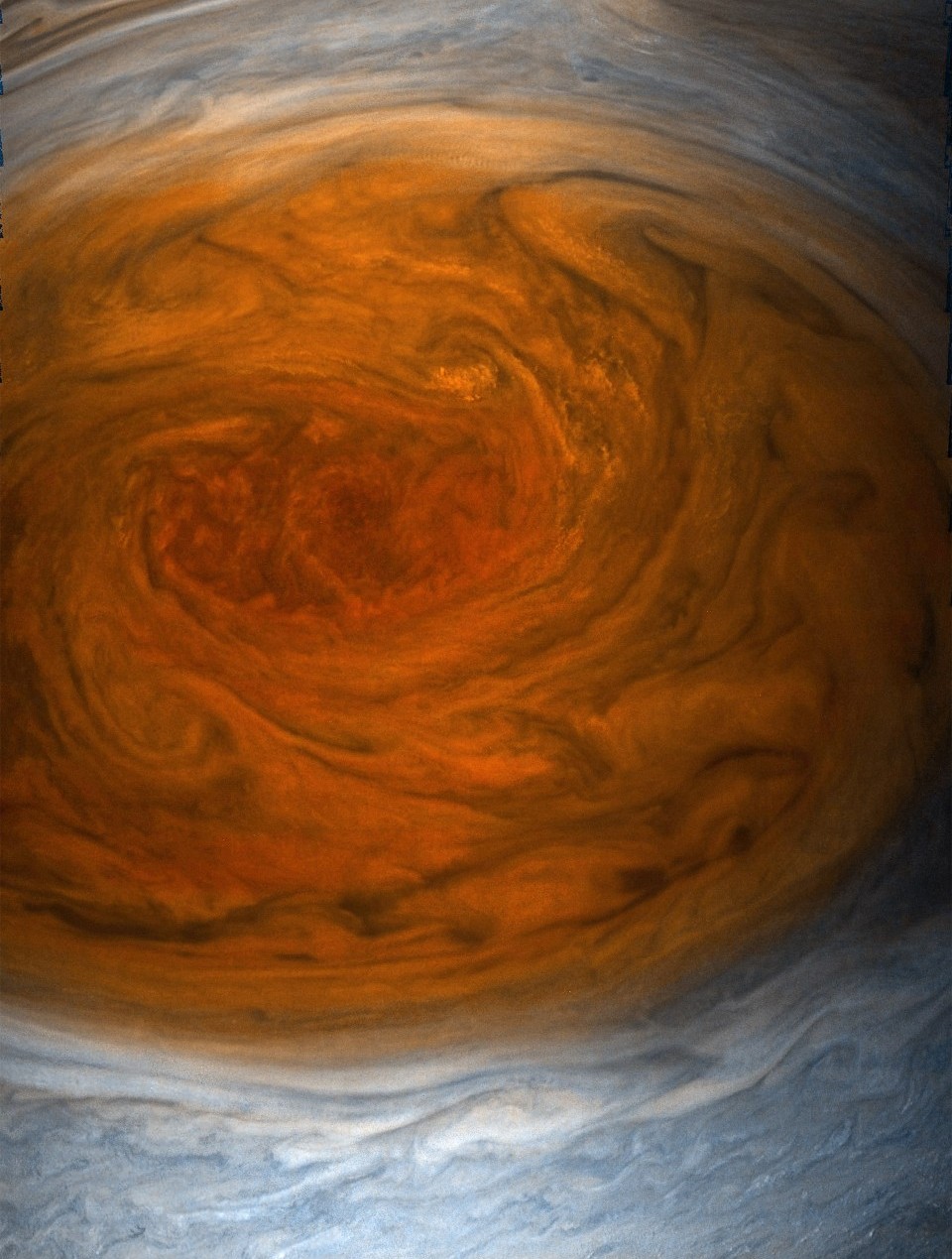Galaxies, Stars and Nebulae series: A great outer space picture featuring a three colour composite of the well-known Crab Nebula (also known as Messier 1), as observed with the…
There are advances being made almost daily in the disciplines required to make space and its contents accessible. This blog brings together a lot of that info, as it is reported, tracking the small steps into space that will make it just another place we carry out normal human economic, leisure and living activities.
Saturday, 15 July 2017
Close-up of The Great Red Spot
more »
 On July 11, the Juno spacecraft once again swung near to Jupiter's turbulent cloud tops in its looping 53 day orbit around the Solar System's ruling gas giant. About 11 minutes after perijove 7, its closest approach on this orbit, it passed directly above Jupiter's Great Red Spot. During the much anticipated fly over, it captured this close-up image data from a distance of less than 10,000 kilometers. The raw JunoCam data was subsequently processed by citizen scientists. Very long-lived but found to be shrinking, the Solar System's largest storm system was measure to be 16,350 kilometers wide on April 15. That's about 1.3 times the diameter of planet Earth.
On July 11, the Juno spacecraft once again swung near to Jupiter's turbulent cloud tops in its looping 53 day orbit around the Solar System's ruling gas giant. About 11 minutes after perijove 7, its closest approach on this orbit, it passed directly above Jupiter's Great Red Spot. During the much anticipated fly over, it captured this close-up image data from a distance of less than 10,000 kilometers. The raw JunoCam data was subsequently processed by citizen scientists. Very long-lived but found to be shrinking, the Solar System's largest storm system was measure to be 16,350 kilometers wide on April 15. That's about 1.3 times the diameter of planet Earth.
Zazzle Space Gifts for young and old
 On July 11, the Juno spacecraft once again swung near to Jupiter's turbulent cloud tops in its looping 53 day orbit around the Solar System's ruling gas giant. About 11 minutes after perijove 7, its closest approach on this orbit, it passed directly above Jupiter's Great Red Spot. During the much anticipated fly over, it captured this close-up image data from a distance of less than 10,000 kilometers. The raw JunoCam data was subsequently processed by citizen scientists. Very long-lived but found to be shrinking, the Solar System's largest storm system was measure to be 16,350 kilometers wide on April 15. That's about 1.3 times the diameter of planet Earth.
On July 11, the Juno spacecraft once again swung near to Jupiter's turbulent cloud tops in its looping 53 day orbit around the Solar System's ruling gas giant. About 11 minutes after perijove 7, its closest approach on this orbit, it passed directly above Jupiter's Great Red Spot. During the much anticipated fly over, it captured this close-up image data from a distance of less than 10,000 kilometers. The raw JunoCam data was subsequently processed by citizen scientists. Very long-lived but found to be shrinking, the Solar System's largest storm system was measure to be 16,350 kilometers wide on April 15. That's about 1.3 times the diameter of planet Earth.Zazzle Space Gifts for young and old
Hubble spots a barred Lynx spiral
more »
Discovered by British astronomer William Herschel over 200 years ago, NGC 2500 lies about 30 million light-years away in the northern constellation of Lynx. NGC 2500 is a particular kind of spiral galaxy known as a barred spiral, its wispy arms swirling out from a bright, elongated core.
via Science Daily
Zazzle Space Exploration market place
Discovered by British astronomer William Herschel over 200 years ago, NGC 2500 lies about 30 million light-years away in the northern constellation of Lynx. NGC 2500 is a particular kind of spiral galaxy known as a barred spiral, its wispy arms swirling out from a bright, elongated core.
via Science Daily
Zazzle Space Exploration market place
Subscribe to:
Comments (Atom)
